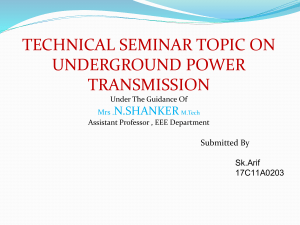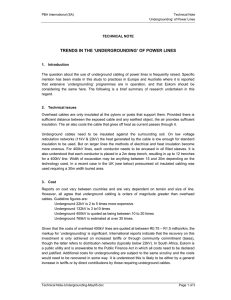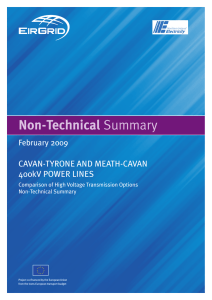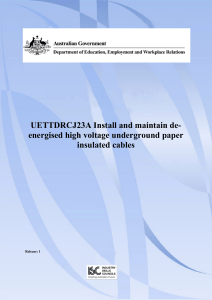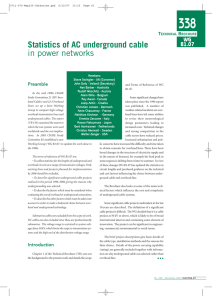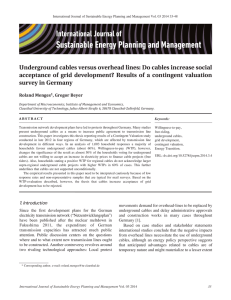Environmental aspects of underground cabling
advertisement
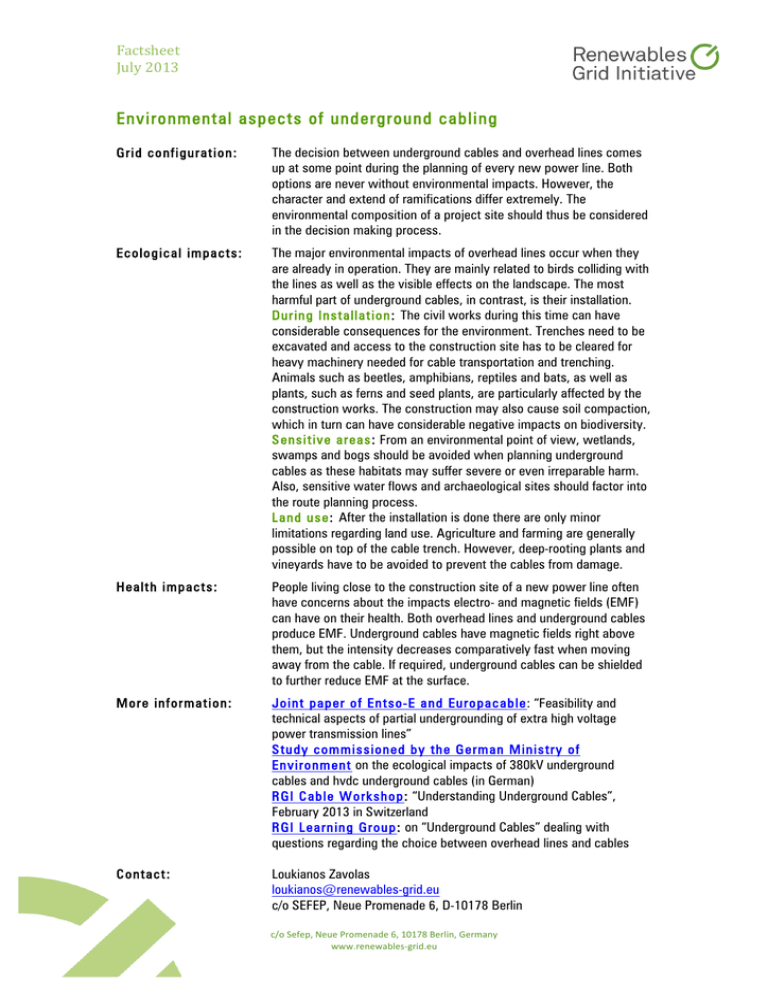
Factsheet July 2013 Environmental aspects of underground cabling Grid configuration: The decision between underground cables and overhead lines comes up at some point during the planning of every new power line. Both options are never without environmental impacts. However, the character and extend of ramifications differ extremely. The environmental composition of a project site should thus be considered in the decision making process. Ecological impacts: The major environmental impacts of overhead lines occur when they are already in operation. They are mainly related to birds colliding with the lines as well as the visible effects on the landscape. The most harmful part of underground cables, in contrast, is their installation. During Installation: The civil works during this time can have considerable consequences for the environment. Trenches need to be excavated and access to the construction site has to be cleared for heavy machinery needed for cable transportation and trenching. Animals such as beetles, amphibians, reptiles and bats, as well as plants, such as ferns and seed plants, are particularly affected by the construction works. The construction may also cause soil compaction, which in turn can have considerable negative impacts on biodiversity. Sensitive areas: From an environmental point of view, wetlands, swamps and bogs should be avoided when planning underground cables as these habitats may suffer severe or even irreparable harm. Also, sensitive water flows and archaeological sites should factor into the route planning process. Land use: After the installation is done there are only minor limitations regarding land use. Agriculture and farming are generally possible on top of the cable trench. However, deep-rooting plants and vineyards have to be avoided to prevent the cables from damage. Health impacts: People living close to the construction site of a new power line often have concerns about the impacts electro- and magnetic fields (EMF) can have on their health. Both overhead lines and underground cables produce EMF. Underground cables have magnetic fields right above them, but the intensity decreases comparatively fast when moving away from the cable. If required, underground cables can be shielded to further reduce EMF at the surface. More information: Joint paper of Entso-E and Europacable: “Feasibility and technical aspects of partial undergrounding of extra high voltage power transmission lines” Study commissioned by the German Ministry of Environment on the ecological impacts of 380kV underground cables and hvdc underground cables (in German) RGI Cable W orkshop: “Understanding Underground Cables”, February 2013 in Switzerland RGI Learning Group: on “Underground Cables” dealing with questions regarding the choice between overhead lines and cables Contact: Loukianos Zavolas loukianos@renewables-grid.eu c/o SEFEP, Neue Promenade 6, D-10178 Berlin c/o Sefep, Neue Promenade 6, 10178 Berlin, Germany www.renewables-­‐grid.eu



